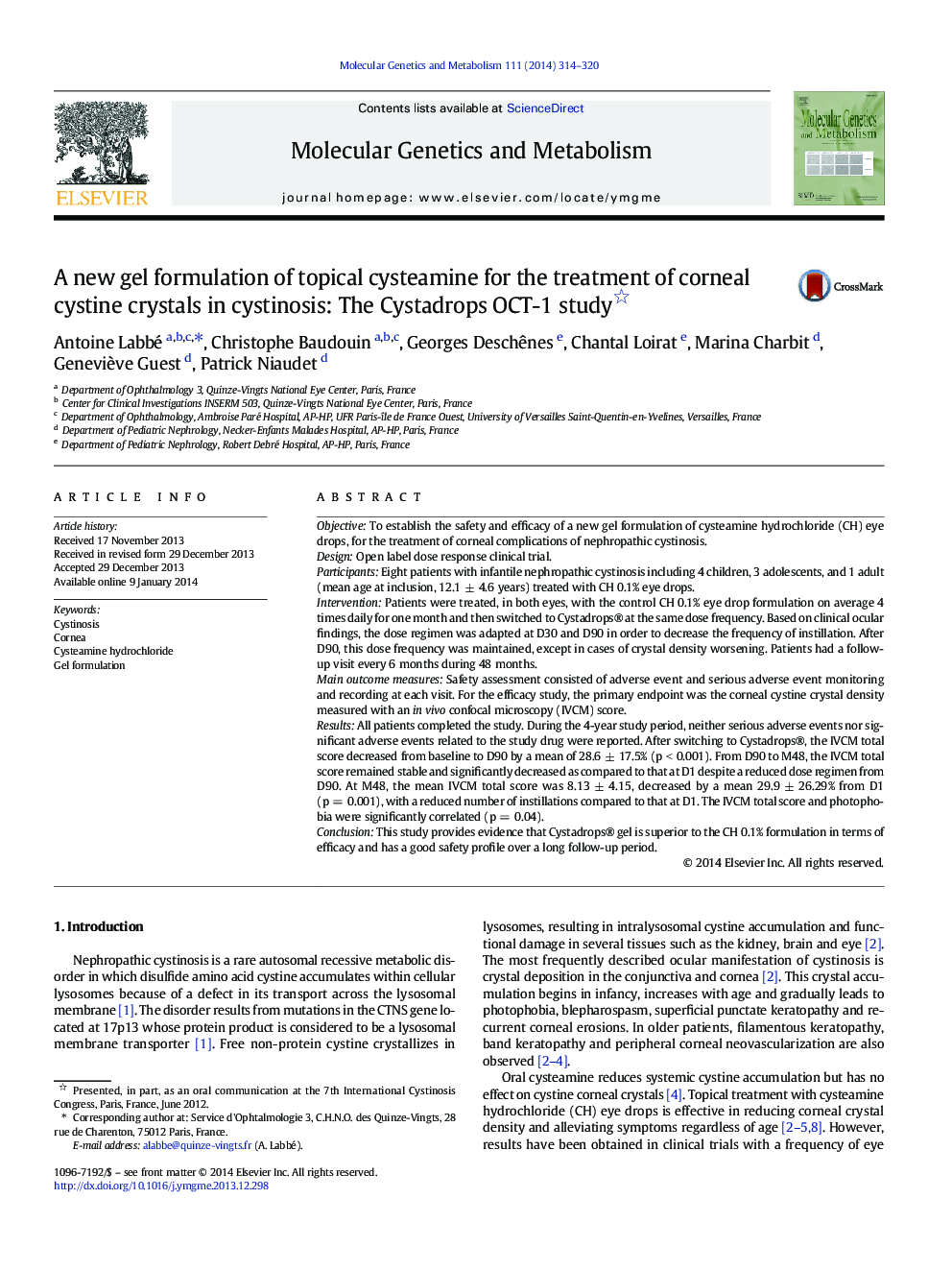| Article ID | Journal | Published Year | Pages | File Type |
|---|---|---|---|---|
| 1998411 | Molecular Genetics and Metabolism | 2014 | 7 Pages |
•Cysteamine eye drops are effective in reducing corneal crystal deposits in cystinosis.•Cystadrops® is a new gel formulation of cysteamine eye drops.•Cystadrops® is effective and had a good safety profile over a long follow-up period.•New formulations of cysteamine may improve the quality of life in cystinosis.
ObjectiveTo establish the safety and efficacy of a new gel formulation of cysteamine hydrochloride (CH) eye drops, for the treatment of corneal complications of nephropathic cystinosis.DesignOpen label dose response clinical trial.ParticipantsEight patients with infantile nephropathic cystinosis including 4 children, 3 adolescents, and 1 adult (mean age at inclusion, 12.1 ± 4.6 years) treated with CH 0.1% eye drops.InterventionPatients were treated, in both eyes, with the control CH 0.1% eye drop formulation on average 4 times daily for one month and then switched to Cystadrops® at the same dose frequency. Based on clinical ocular findings, the dose regimen was adapted at D30 and D90 in order to decrease the frequency of instillation. After D90, this dose frequency was maintained, except in cases of crystal density worsening. Patients had a follow-up visit every 6 months during 48 months.Main outcome measuresSafety assessment consisted of adverse event and serious adverse event monitoring and recording at each visit. For the efficacy study, the primary endpoint was the corneal cystine crystal density measured with an in vivo confocal microscopy (IVCM) score.ResultsAll patients completed the study. During the 4-year study period, neither serious adverse events nor significant adverse events related to the study drug were reported. After switching to Cystadrops®, the IVCM total score decreased from baseline to D90 by a mean of 28.6 ± 17.5% (p < 0.001). From D90 to M48, the IVCM total score remained stable and significantly decreased as compared to that at D1 despite a reduced dose regimen from D90. At M48, the mean IVCM total score was 8.13 ± 4.15, decreased by a mean 29.9 ± 26.29% from D1 (p = 0.001), with a reduced number of instillations compared to that at D1. The IVCM total score and photophobia were significantly correlated (p = 0.04).ConclusionThis study provides evidence that Cystadrops® gel is superior to the CH 0.1% formulation in terms of efficacy and has a good safety profile over a long follow-up period.
